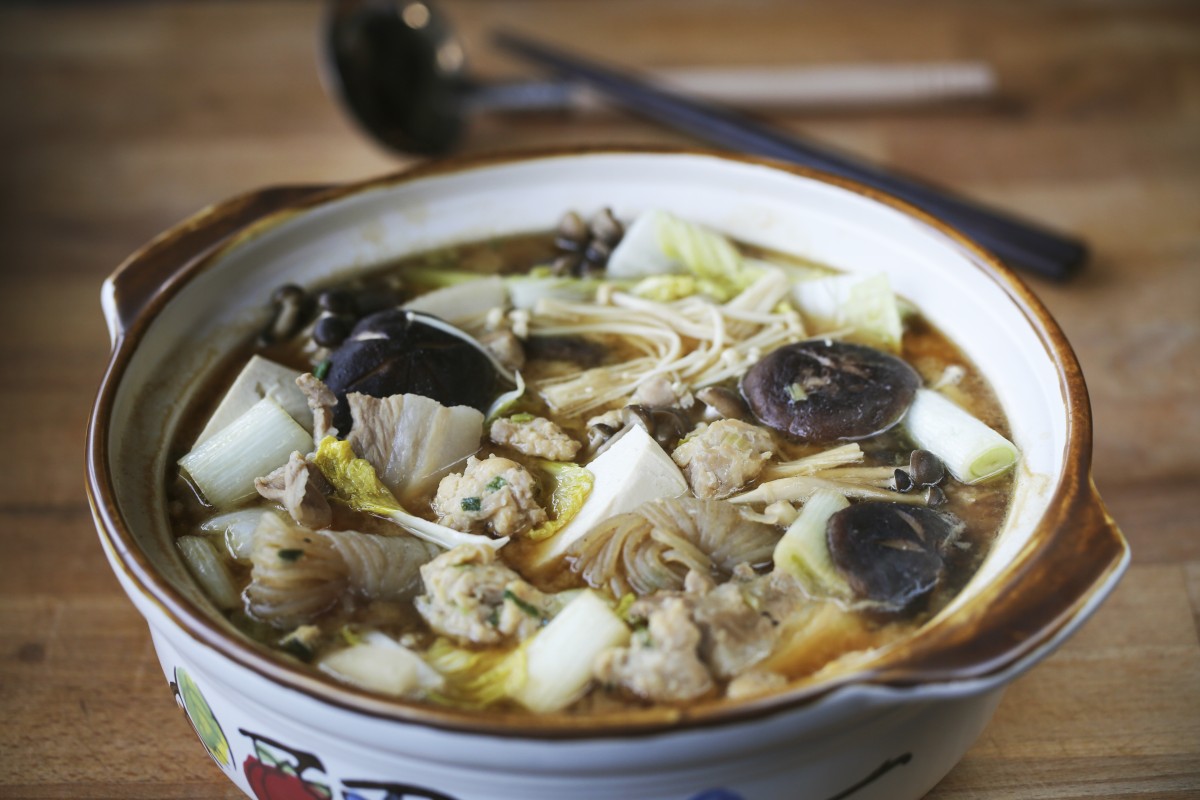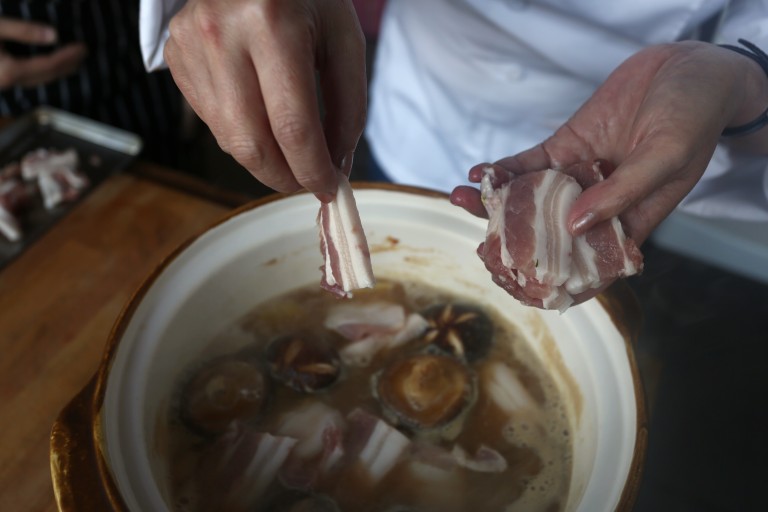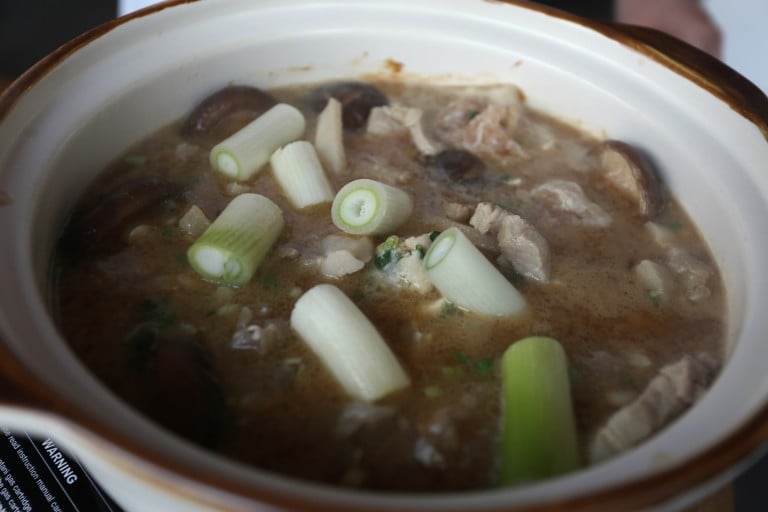
In Japan, nabe, or hotpot, is a comforting, filling soupy-stew cooked in a donabe (earthenware pot). Chanko nabe – sumo wrestler nabe – is a healthy, hearty, calorific version that gets its name because it’s eaten in vast quantities by sumo wrestlers to help them gain (or maintain) their weight.
Dashi bags look like tea bags, and can be found in the Japanese section of supermarkets. Just soak them in hot water for an instant, umami-rich clear broth. For this dish, choose the bags made with katsuo (fermented and dried skipjack tuna) and kombu (giant kelp).
Konnyaku, also called konjac, is slippery and grey, with the texture of firm jelly. It is sold in small packs in the refrigerated section of Japanese supermarkets. It comes in many forms; for this recipe, buy the type made into small bundles of noodles.
The best implement for grating ginger is a solid (no holes), roughly textured ceramic Japanese grater called oroshigane with a groove that collects the juice and finely textured pulp. With this, the tough fibres remain attached to the root, so they can be cut off and discarded, unlike with rasp-type graters, which produce a rough, fibrous pulp.
If you have a portable burner, cook the nabe on the dinner table in front of your guests. Provide small ladles, so everyone can fish out their favourite ingredients. This is plenty to feed four hungry diners (or one or two sumo wrestlers). If you have an unexpected guest or two, simply cook more vegetables.
After eating the solids and most of the broth, you can add more dashi broth (or plain water) to the pot and cook udon noodles, for soup noodles. Alternatively, you can add cooked rice and stir in some whisked egg, for a rich, flavourful congee.
Put the minced chicken in a bowl. Mince the spring onion and finely grate the ginger, then add them to the chicken. Season with salt and pepper and mix thoroughly. Refrigerate while preparing the rest of the ingredients.
Score the top of the shiitake mushrooms in a decorative pattern. Cut the cabbage in half and remove the core, then cut into bite-size pieces. Pull the shimeji mushrooms into small clumps attached at the base. Cut off and discard the woody stem end of the enoki mushrooms, then pull the mushrooms apart into small clumps.
Thoroughly rinse the leeks (negi) and trim off and discard the stem ends. Cut the leeks into 3cm (1¼in) lengths. Cut the block of tofu into eight pieces. Drain the konnyaku noodles.
Put three dashi bags into the donabe or pot and add 750ml (3 cups) of boiling water. Leave to steep for about 10 minutes, then remove the dashi bags.
Put the miso into a bowl and add about 120ml (½ cup) of the hot dashi broth. Stir until smooth, add more broth to make a thin mixture, then pour it into the donabe/pot. (If you add the miso straight into the broth, without thinning it out, it often ends up in small clumps.) Stir in the soy sauce and sake, then bring to a boil over a medium flame. Keep the broth at a simmer, adjusting the flame as necessary.

Add the pork belly and shiitake mushrooms to the simmering broth and cook for a few minutes. Use a tablespoon to scoop up the chicken mixture to form roughly shaped meatballs and add them to the broth.

Stir in the cabbage, shimeji mushrooms, negi, tofu and konnyaku and simmer for about three minutes, then add the enoki mushrooms. Simmer until the pork belly and meatballs are cooked and the leeks are tender.
Let your guests help themselves to the ingredients.
If you are still hungry after eating most of the ingredients, make fresh dashi broth by soaking one dashi bag in boiling water (300ml-500ml [1¼ cup to 2 cups] or more, depending on how much broth is left in the pot). Add the broth to the pot and bring to a simmer, then use it to cook the udon noodles, or add cooked rice and whisked eggs. When the ingredients are hot, ladle into bowls and top with minced spring onion.